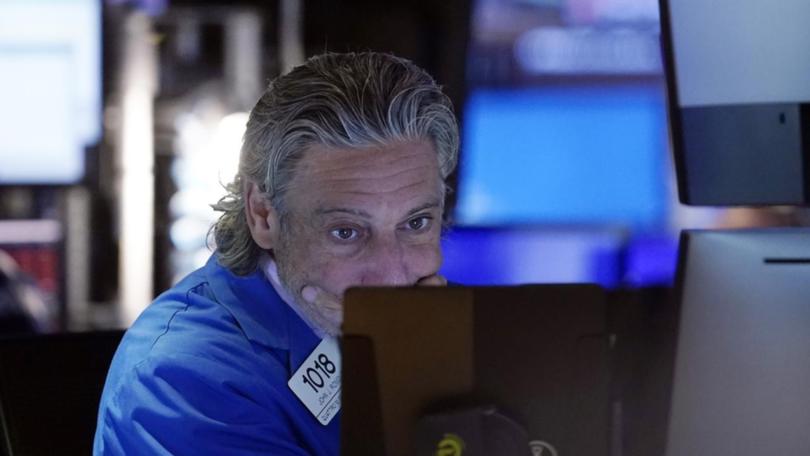ASX set to fall again as US stock market bloodbath adds to global recession fears

Equities have suffered heavy losses around the globe as Wall Street added to a rout that started in Japan, while the dollar tumbled against the yen and nervous investors looked for signs of a recession in the United States.
US Treasury yields however regained ground after solid US services sector activity eased recession fears, having earlier on Monday fallen to their lowest level in more than a year. Chicago Federal Reserve Bank President Austan Goolsbee boosted sentiment when he said Friday’s weak July jobs report did not signal a recession.
Still, oil prices settled lower on Monday, as recession fears led to demand concerns, but declines were buffered by worries that escalating Middle East conflict could hit crude supplies.
Sign up to The Nightly's newsletters.
Get the first look at the digital newspaper, curated daily stories and breaking headlines delivered to your inbox.
By continuing you agree to our Terms and Privacy Policy.Earlier Japan’s benchmark Nikkei average had closed down 12.40 per cent for its largest one-day fall since October 1987 as the yen surged against the backdrop of Japan’s decision last week to raise interest rates to levels unseen in 15 years.
The yen rallied sharply against the dollar on Monday due to aggressive unwinds of so-called carry trades, where investors borrow money from economies with low interest rates such as Japan to fund investments in higher-yielding assets elsewhere.
“The fact that there was such a strong unwind in the dollar/yen, in turn forced investors to take some profits where they’ve been hiding out this year, which has been mostly big tech,” said Kevin Gordon, senior investment strategist at Schwab.
“It’s become the biggest target because it was the best performer and that’s probably the easiest spot for traders to take their profits.”
A weaker-than-expected US payrolls report for July had already started a Wall Street sell-off on Friday when investor bets for a Federal Reserve September rate cut suddenly doubled to 50 basis points. The jobs data had followed disappointing earnings updates from some megacap US technology companies.
However, US stocks pared losses somewhat after the Institute for Supply Management (ISM) said on Monday that services sector activity rebounded from a four-year low in July with rising orders and employment, easing recession fears.
Its non-manufacturing purchasing managers (PMI) index rose to 51.4 from 48.8 in June, ahead of economist expectations for 51.0. A PMI reading above 50 indicates growth in services, which accounts for more than two-thirds of the US economy.
On Wall Street, the Dow Jones Industrial Average fell 1,033.99 points, or 2.60 per cent, to 38,703.27, the S&P 500 lost 160.23 points, or 3.00 per cent, to 5,186.33 and the Nasdaq Composite lost 576.08 points, or 3.43 per cent, to 16,200.08.
MSCI’s gauge of stocks across the globe fell 25.58 points, or 3.25 per cent, to 761.63 for its biggest one-day percentage drop since September 2022. Europe’s STOXX 600 index earlier finished down 2.17 per cent.
And CBOE’s volatility index, known as Wall Street’s fear gauge, logged its largest intraday jump before ending the day at 38.57 points for its highest close since October 2020.
In currencies, the Japanese yen surged to seven-month highs against the dollar as traders interpreted last week’s US economic data as raising the prospects for a US recession and steeper than previously expected Fed rate cuts.
The dollar index, which measures the greenback against a basket of currencies including the yen and the euro, fell 0.46 per cent to 102.68.
Against the Japanese yen, the dollar weakened 1.77 per cent to 143.94 while the euro was up 0.45 per cent at $US1.0957.
As for US Treasuries, James Knightley, chief international economist, US at ING said Monday services data was a key factor for yields rebound along with Goolsbee’s comments.
Knightly said Goolsbee is “notably the most dovish member for quite some time at the Fed and he didn’t suggest that there was any real alarm.”
The yield on benchmark US 10-year notes fell 1.1 basis points to 3.785 per cent, from 3.796 per cent late on Friday while the 30-year bond yield fell 3.5 basis points to 4.0763 per cent.
The two-year note yield, which typically moves in step with interest rate expectations, rose three basis points to 3.9017 per cent, from 3.872 per cent late on Friday.
The market’s aversion to risk was also seen in tighter spreads on US interest rate swaps, futures on the Secured Overnight Financing Rate and the Federal funds rate along with surging US junk bond spreads.
In energy markets, US crude settled down 0.79 per cent at $US72.94 ($A112.31) a barrel and Brent finished at $US76.30 ($A117.49) per barrel, down 0.66 per cent on the day.
In precious metals, gold appeared to lose some of its safe-haven appeal. Spot gold lost 1.52 per cent to $US2,406.16 an ounce. US gold futures fell 0.74 per cent to $US2,407.70 an ounce.
